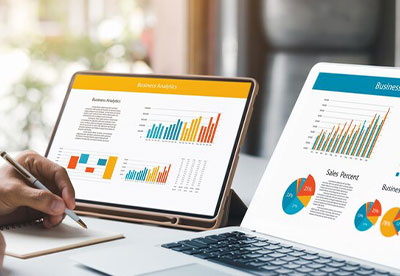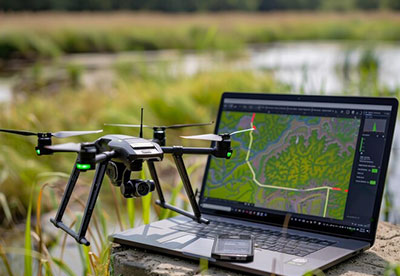In the past, drones were mainly seen as just tools for taking aerial photos. While that’s certainly one of the uses, the wide range of benefits drones bring to different industries has been a surprising element. Drones are empowering businesses to make better decisions by providing them with valuable high-quality images and new perspectives.
As per reports, Global Drone Market size was valued at USD 28 Billion in 2023 and is estimated to grow to USD 166.70 Billion by 2031, growing at a CAGR of 25% during the forecast period. With the advancement of technology, the application of drones will surge across an array of industries whether it’s for agriculture, construction, delivery, mining energy industry, and so on.
But have you ever wondered where all these tons of data generated by drones is stored?
Drones can gather vast amounts of data quickly. Drone data, including images, videos, audio recordings, and flight logs requires substantial storage capacity. Additionally, the high frequency of data collected during a drone’s flight requires extended storage. Managing and storing this data can be a challenge, as traditional methods fall short of storing such volumes and complex data.
Enter Cloud Solutions!
Cloud infrastructure provides a scalable and flexible approach to managing drone data. It offers an effective alternative to traditional hard disk storage. Cloud storage solutions not only aid in making real-time decisions based on accurate insights gathered in one centralized location but also eliminate the delays that can occur when humans are involved in making sense of the data.
Let’s dig into what challenges are addressed by cloud adoption-
Hassle-free Data Management
Drone data should be stored in a way that allows flight operators to categorize and filter the data easily. Gone are the days of storing data manually on local devices and worrying about running out of space. Cloud-based platforms offer a much more streamlined approach. Cloud platforms allow us to bifurcate the data with folders, tags, and metadata and make it simpler to find information later and that too at any time and anywhere.
Data Security
Drone footage is paramount and the security of such enormous data through traditional ways is time-consuming and is limited in their capacity and scalability. On the other hand, cloud providers invest heavily in security infrastructure including firewalls, data encryption, and access controls, conduct regular security audits, and stay up to date on the latest data privacy regulations (e.g., GDPR, HIPAA). These robust measures facilitate in protection of drone data from unauthorized use.
Facilitates Business Intelligence and Analytics
Managing and storing data on the cloud goes beyond just offering convenience. Cloud platforms integrate effortlessly with BI tools and analytics software that is impractical with on-premises infrastructure. Integration with such tools can offer valuable insights and help in data-driven decision-making. The multi-sector application of drones helps different sectors in making confident decisions, for instance, these tools can extract valuable insights from drone data, such as identifying areas where infrastructure needs repair, tracking the progress of construction projects over time, or analyzing crop health in agricultural fields.
Boosts Collaboration
Cloud platforms enable real-time collaboration among different team members as they can view and edit drone data simultaneously. For instance, as soon as drone data is uploaded to the cloud, team members irrespective of any location can review and provide input in real-time. This instant collaboration boosts the speed of workflow and enables prompt decision-making. Additionally, cloud platforms also offer version control features to track the changes made to files and documents and allow them to revert to previous versions if needed.
Final Words
The utilization of the cloud for drone storage has automated the workflow and has allowed drone operators to focus on what truly matters- taking breathtaking shots. It has centralized the drone data storage and offers real-time access to the drone data. On top of this, cloud platforms get seamlessly integrated with Business Intelligence tools enabling advanced data analytics and visualization capabilities.
We At Canopus Infosystems understand how daunting it is to manage and store mountains of data with traditional local devices and hard disks. We have expertise in offering tailored cloud solutions and have already worked on similar drone projects. You can rely on our wealth of experience to address your specific needs, ensuring efficient data management and empowering your organization to leverage drone data effectively.
3 mins read


















